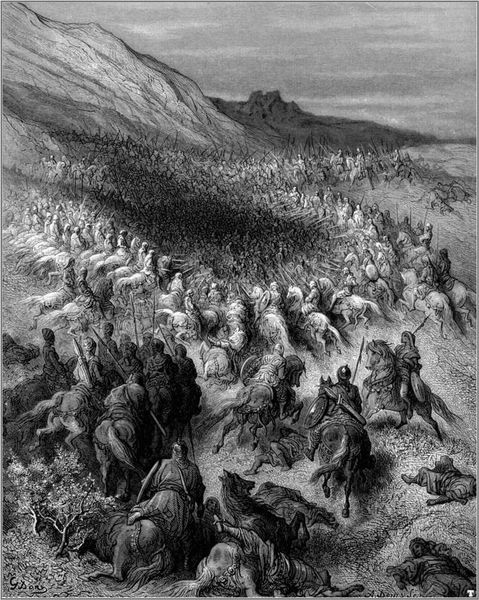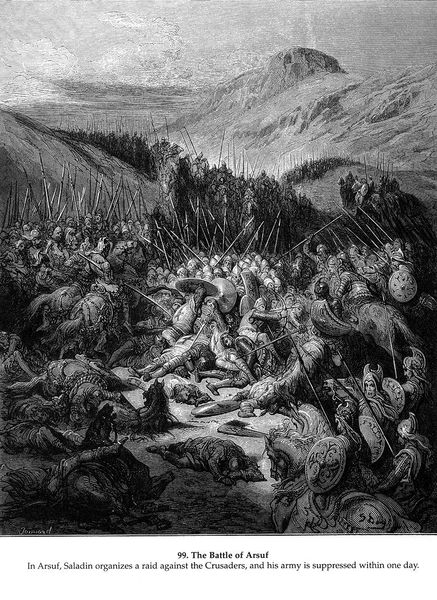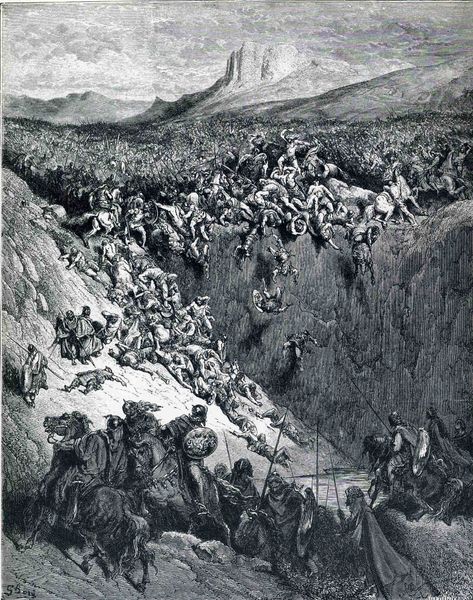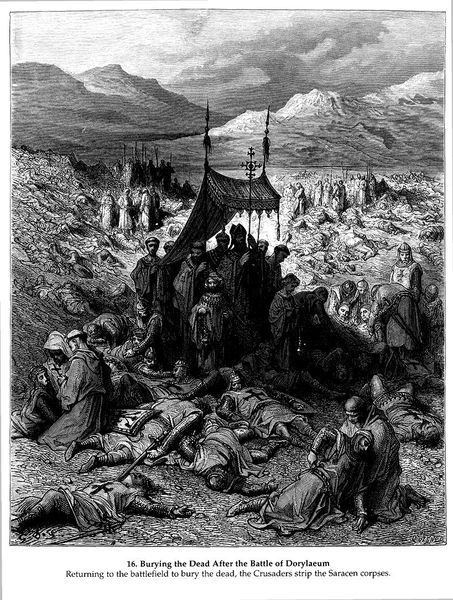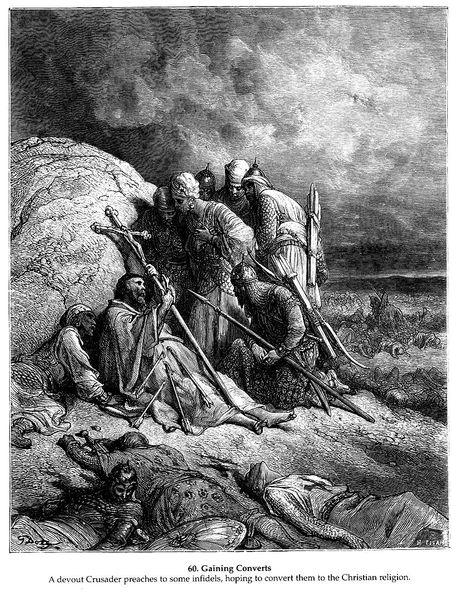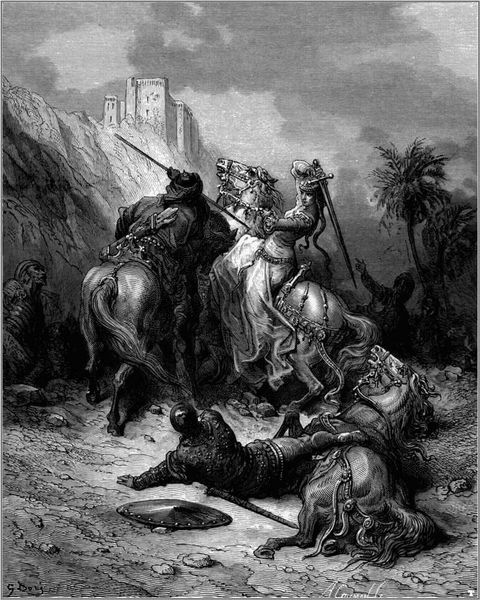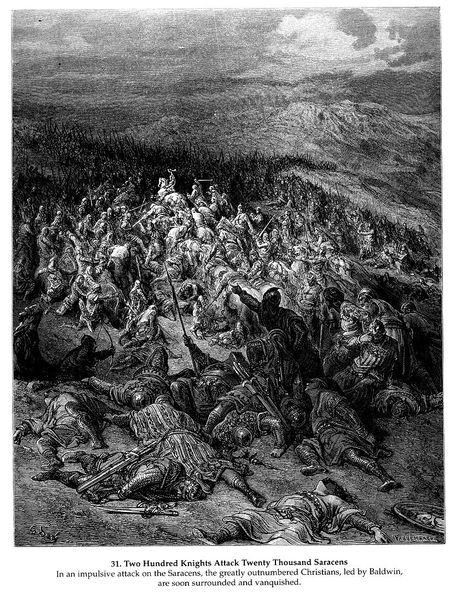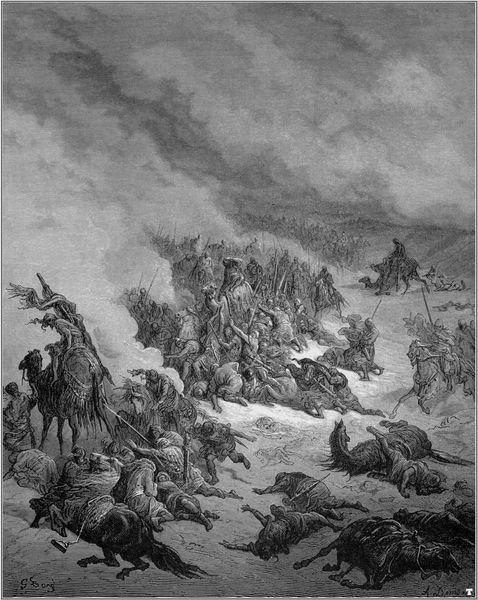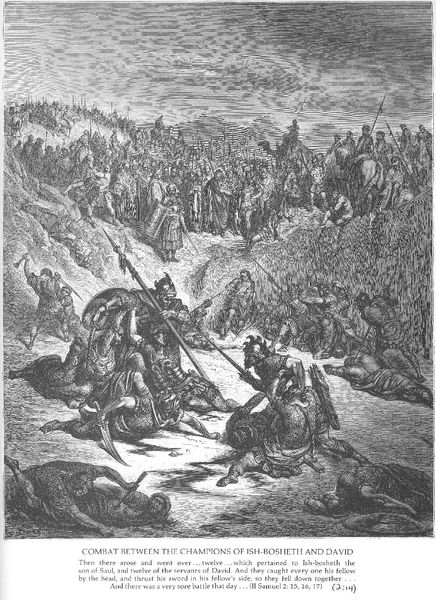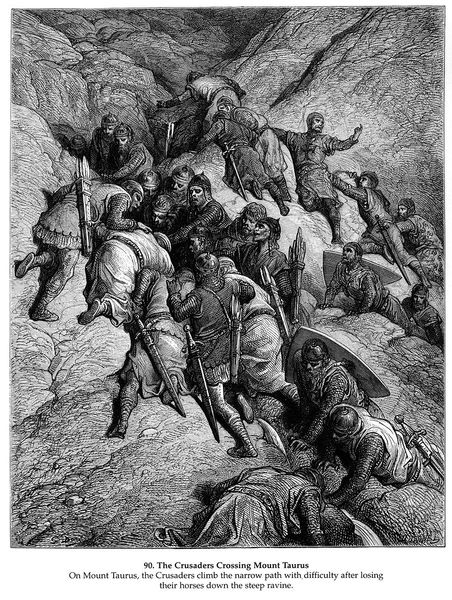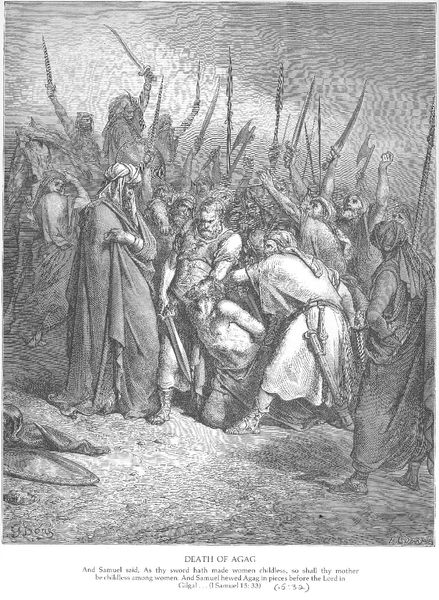
Copyright: Public domain
Curator: What a stark depiction! "Glorious Death of Jacques de Maille, Marshal of the Temple" by Gustave Doré. An engraving from 1877. My first impression is how dark it is, heavy with carnage, and oddly beautiful in its composition. Editor: My attention is immediately drawn to the material processes, it’s engraving! Can you imagine the hours of labor chiseling away to make all those tiny details? I'm interested in the means by which this narrative of war is brought to the masses via printmaking, readily available to the common person. Curator: A story etched in light and shadow, so to speak. For me, this historical event is a staging of symbolic power through religious warfare; consider the symbolism of the Crusades and how Dore is capturing, maybe even manipulating it. The fallen, but with the mounted knight still upright—it projects an air of resilience, or even propaganda. Editor: Exactly, propaganda relies on reproduction! But let's not get lost in just symbolism and the religious justification of war. Look closely; mass production facilitates consumption. It’s art for the masses; images are a commodity circulated widely through print culture in Dore's time. The romanticism simplifies complex historical contexts and relationships in order to mass-produce it and sell it for profit. Curator: That’s true. I’m taken by how Dore uses familiar tropes -the stoic leader amid chaos, the fallen bodies symbolizing sacrifice - it reinforces certain cultural narratives. We're conditioned to interpret such scenes heroically. Editor: But what materials reinforce this hero worship? The dark inks, the paper available… even the very tools used for its production dictated its outcome and widespread dissemination! Romanticism served the capitalist classes for a very specific moment. It obscures material exploitation that happens beyond the edges of this work by manufacturing consent in mass audiences. Curator: It seems both glorification and criticism of war reside within it; such complex contradictions for the romantic period. So much pain, yet also grandeur. Editor: Right, because we can read how power operates within representational systems as it is embedded within material existence, as material conditions permit it, which it exploits for social relations… In short, understanding that this “glorious death” is available as an object—commodified. Curator: Thank you, by understanding the relationship between this imagery and society, maybe it helps us resist simple hero worship. Editor: Indeed. Appreciating it on material level helps us recognize the image's intended circulation, not just face value.
Comments
No comments
Be the first to comment and join the conversation on the ultimate creative platform.
